 Narrowsburg
NarrowsburgLight Rain Fog/Mist, 43°
Wind: 8.1 mph
 Narrowsburg
NarrowsburgUPPER DELAWARE RIVER VALLEY — The arrival of fall and winter in the Upper Delaware River Valley ushers in refreshing opportunities to venture forth with cameras at the ready to capture the …
Stay informed about your community and support local independent journalism.
Subscribe to The River Reporter today. click here
This item is available in full to subscribers.
Please log in to continue |
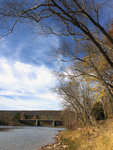
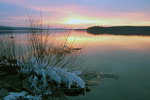
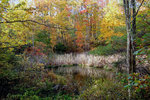
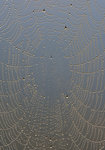
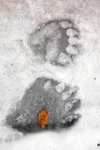
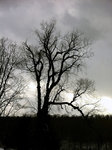
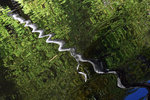
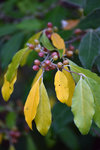
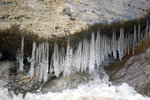
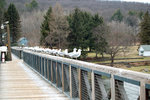
UPPER DELAWARE RIVER VALLEY — The arrival of fall and winter in the Upper Delaware River Valley ushers in refreshing opportunities to venture forth with cameras at the ready to capture the amazing abundance of natural resources found here. Fall foliage is an obvious enticement but can be explored beyond the usual approach to shooting landscapes aflame with color. Winter may seem to offer less inspiring subject matter but is actually alive with possibilities. Seize the opportunities presented by both seasons to capture the heart of this truly special place with the following tips.
TIP ONE: Set a plan
For either season, setting a plan can be a good practice to guide your efforts. One possibility is to follow the path of a local river like the Lackawaxen or the Delaware. At the confluence of these two rivers in Lackawaxen, PA is the Zane Grey Museum, and nearby is the historic Roebling Bridge (the oldest existing wire suspension bridge in the United States) both of which offer excellent photographic opportunities (www.nps.gov/upde/planyourvisit/hours.htm).
Or focus on a particular water body, such as the 5,700-acre Lake Wallenpaupack in Pennsylvania, which has several public access areas (fishandboat.com/water/lakes_nonpfbc/wallenpaupack/00wallenp.htm).
Shoot at different times of day and in varying weather conditions to obtain a broader sense of what makes each waterway unique. Throughout, ask yourself what special features or qualities each offers, while striving to answer that question with your camera. Complete this exercise in both fall and winter for dramatically different results that will motivate you to do the same in spring and summer.
TIP TWO: Select a specific subject
Select a hike with a specific photographic subject in mind, such as a trek to the 57-acre Minisink Battleground Park, located on the site of the only Revolutionary War battle fought in the Upper Delaware Region. Small wetlands resulting from past quarrying activities, as well as their associated wildlife, offer ample opportunity for photographic exploration in both fall and winter. Information on this and other trails can be found at www.trailkeeper.org.
TIP THREE: Apply a fresh eye
Fall begins with subtle color shifts, builds to a fevered pitch of impassioned palettes of red, orange and yellow, then rids itself of the burden of sustaining such glory. Each stage offers opportunities to capture the show. While sweeping landscapes are gratifying, make an effort to think beyond this type of shot to find other meaningful ways to seize the spirit of this satisfying season.
A single, bright, imperfect leaf juxtaposed against the cool silver tones of an old canoe suggests a sense of the impermanence that underlies fall and the looming days of lessening light that define winter.
Fluctuating temperatures in fall make for visually compelling close-up shots of dew or water droplets draped along strands of spider webs or glistening on colorful leaves.
TIP FOUR: Look for expressions of life
In the “dead of winter,” seeking evidence of life allows us to celebrate visually the season that tends to trap us indoors complaining of cabin fever. Animal tracks and scat, ice sculptures and designs, frozen waterfalls, the interplay of stark light and the subtle textures of snow present challenges and chances to find new ways to reveal this season’s “living” side.
Winter also offers the opportunity to inspect the “bones” of the regional landscape, as structures such as trees and geological formations cloaked by foliage and brush in summer become exposed after leaf fall in late autumn.
TIP FIVE: Shoot with an eye for the artful
Challenge yourself with exercises such as finding a recognizable shape, like a heart, expressed in nature. Take advantage of the mirroring aspect of reflections and the abstract distortions of light on moving water. Keep alert for surprising combinations of shape, texture and color.
Nature is a skilled sculptor and her works appear in a variety of mediums—driftwood, spider webs, trees, rock outcroppings, feathers and more. Celebrate the show by shooting expressions of her handiwork.
Shake up your traditional photographic routines by getting out earlier, staying out later, choosing new locations and allowing these changes to “freshen” your perception of the natural resources of the Upper Delaware Region.
TIP SIX: Watch for wildlife
Stay alert for unusual wildlife activity driven by the season, such as a lineup of hungry ring-billed gulls eagerly watching for alewives at the Roebling Bridge. Pay attention to what you are hearing in order to increase your chances of encountering wildlife. That birdcall or that rustle in the leaves can alert you to the presence of wildlife that you might not have noticed otherwise.
Overall, remember you are always in a visual conversation with what is in front of your lens. Play with your camera—and with your subject. Strive to keep it lively, to be open to what is offered and to bring a sense of heart to the exploration. Shoot with the spirit of the naturalist, the skill of the technician and the heart of the artist. Your photos will reveal the engagement that results and will provide a satisfying sense of place to those who view them.
Comments
No comments on this item Please log in to comment by clicking here